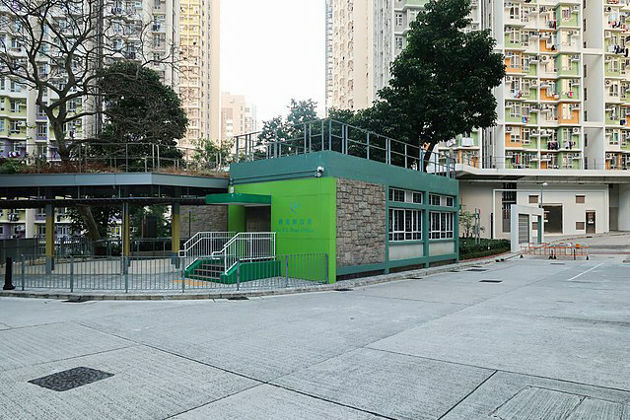The Green Revolution: Exploring Sustainable Insulation Board Materials
7Newswire
11 Oct 2023, 06:50 GMT+10

As sustainability becomes more important, the construction industry is seeking greener insulation solutions derived from natural and renewable resources, instead of fossil fuel-based materials. This aligns with a broader "green revolution" in building.
Sustainable insulation options like cork, hemp, mycelium, and agricultural byproducts show promise as eco-friendly alternatives. Although barriers exist, green insulation materials support energy efficiency while reducing environmental impacts.
Cork Insulation
One promising green insulation is cork, derived from the bark of cork oak trees. Cork contains suberin, giving it effective insulating properties on par with conventional materials. Cork production is sustainable since the trees are not cut down during harvesting.
With anti-microbial and sound dampening abilities, cork is gaining popularity as an eco-friendly insulation board. High costs are still a disadvantage, but cork remains a viable green option.
Hemp Insulation
Another natural material under consideration is hemp, as the fast-growing plant sequesters substantial carbon as it grows. Hemp stalk fibres have inherent insulating properties and are anti-fungal and moisture resistant.
Hemp insulation lacks chemical irritants found in some traditional materials. However, processing techniques to produce hemp building insulation are still in development. Legal barriers on industrial hemp cultivation also remain in some regions. But hemp's sustainability makes it an exciting green insulation prospect.
Mycelium Insulation
Mycelium, or fungus roots, can also be used to create natural fibre insulation boards. Companies like Evocative grow mycelium in agricultural waste products, which binds to form a composite material molded into rigid insulation. Mycelium insulation is compostable and uses less energy, water, and processing than conventional types. Although not yet widely available commercially, mycelium represents an innovative application of organic materials.
Agricultural Byproducts
On the agricultural side, rice hulls show potential as a filler for green insulation boards. Rice cultivation generates millions of tons of hulls as a byproduct, typically burned for disposal. Using rice hulls in insulation composites enhances sustainability and provides an outlet for this abundant waste stream. Insulation made from denim cotton scraps also recycles textile waste into a useful green building material.
Straw Bale Insulation
An age-old building material, straw bales can also provide insulation for eco-friendly construction. Straw is the dried stalks left over after grain and seed harvesting. Bundle dried straw together and you have a straw bale, which can be used like an extra-large insulation board.
The air pockets within straw bales resist heat flow, giving them an insulation R-value comparable to fiberglass and rigid foam boards. Installing bale walls in a process called Nebraska stropping leaves the straw exposed on the interior, creating a natural aesthetic. Straw bales are renewable and locally available agricultural byproducts, avoiding insulation shipped long distances. They provide an insulating use for leftover straw that previously was burned or landfilled.
Cellulose Insulation
Another agricultural byproduct showing potential is cellulose, made from recycled paper products. InsulationPoint noted that paper and cardboard are shredded and ground to make loose cellulose insulation or denser boards. The recycled paper content gives cellulose insulation an eco-friendly angle.
Testing shows cellulose insulation levels with or exceeds the performance of conventional fiberglass. Some cellulose insulations add borates as fire retardants, but non-toxic options without chemicals are available. Like straw, cellulose takes advantage of paper waste to create a usable green insulation product.
EPS Foam Alternatives
Polystyrene foam boards, marketed under brands like EPS, are controversial due to health and environmental issues. The manufacturing process for foam board insulation uses hazardous chemicals linked to learning and development disorders. Foam boards also commonly utilize hydrofluorocarbons, powerful greenhouse gases.
This has led to interest in more ecological rigid foam board replacements. Manufacturers are developing insulation boards made from epsomite magnesium sulphate as an alternative mineral-based, flame-retardant foam. Cementitious rigid fibre boards made from wood pulp and cement are another emerging EPS alternative using more natural materials.
Wool Insulation
A classic natural fibre, wool from sheep provides inherent insulation properties that add sustainability to building. Raw wool contains lanolin oils that resist moisture and microbes naturally. Reused wool from textile industry scraps provides insulation as an eco-friendly waste recycling stream. Wool insulation manufacturers claim it outperforms mineral wool for energy efficiency, noise reduction and improved indoor air quality. Wool has one of the highest carbon negativity ratings among building insulation materials. Along with benefitting sustainable food systems, wool insulation offers a renewably sourced alternative to conventional fiberglass rolls and rigid mineral wool boards.
Future Directions
Even more innovative sustainable insulation solutions are in development, like seaweed-based foams, bio-bricks from corn stalks and coconut fibre boards. The quest for green insulation materials aligns with global resource challenges. Despite barriers, eco-conscious builders recognize the value of plant-based, renewable options to construct a sustainable built environment.
Final words
The search for greener insulation is part of a broader green revolution in the building sector. Natural materials like cork, hemp, mycelium, and agricultural byproducts show promise as alternatives to conventional insulation derived from fossil fuels. Developing and overcoming obstacles to sustainable insulation will support energy efficiency and reduced environmental impacts from construction. The materials explored today will help build the green future of insulation.
The green building revolution is thoughtfully sourcing natural and recycled materials for insulation. Agricultural residues, paper waste and natural fibres offer opportunities for effective insulation with reduced environmental footprints. Continued manufacturing innovations to improve performance and mainstream adoption will support greener insulation alternatives gaining market share in the future. Share
Share
 Tweet
Tweet
 Share
Share
 Flip
Flip
 Email
Email
Watch latest videos
Subscribe and Follow
Get a daily dose of Hawaii Telegraph news through our daily email, its complimentary and keeps you fully up to date with world and business news as well.
News RELEASES
Publish news of your business, community or sports group, personnel appointments, major event and more by submitting a news release to Hawaii Telegraph.
More InformationInternational
SectionGaza War sucking life out of an Israeli generation
In the past month alone, 23 Israeli soldiers have been killed in Gaza—three more than the number of remaining living hostages held...
Faulty IT system at heart of UK Post Office scandal, says report
LONDON, U.K.: At least 13 people are believed to have taken their own lives as a result of the U.K.'s Post Office scandal, in which...
Travelers can now keep shoes on at TSA checkpoints
WASHINGTON, D.C.: Travelers at U.S. airports will no longer need to remove their shoes during security screenings, Department of Homeland...
Rubio impersonator used AI to reach officials via Signal: cable
WASHINGTON, D.C.: An elaborate impersonation scheme involving artificial intelligence targeted senior U.S. and foreign officials in...
Warsaw responds to migration pressure with new border controls
SLUBICE, Poland: Poland reinstated border controls with Germany and Lithuania on July 7, following Germany's earlier reintroduction...
Deadly July 4 flash floods renew alarm over NWS staffing shortages
WASHINGTON, D.C.: After months of warnings from former federal officials and weather experts, the deadly flash floods that struck the...
Business
SectionMusk’s X loses CEO Linda Yaccarino amid AI backlash, ad woes
BASTROP, Texas: In a surprising turn at Elon Musk's X platform, CEO Linda Yaccarino announced she is stepping down, just months after...
Ex-UK PM Sunak takes advisory role at Goldman Sachs
NEW YORK CITY, New York: Former British prime minister Rishi Sunak will return to Goldman Sachs in an advisory role, the Wall Street...
Gold ETF inflows hit 5-year high as tariffs drive safe-haven bets
LONDON, U.K.: Physically backed gold exchange-traded funds recorded their most significant semi-annual inflow since the first half...
PwC: Copper shortages may disrupt 32 percent of chip output by 2035
AMSTERDAM, Netherlands: Some 32 percent of global semiconductor production could face climate change-related copper supply disruptions...
U.S. stocks recover after Trump-tariffs-induced slump
NEW YORK, New York - U.S. stocks rebounded Tuesday with all the major indices gaining ground. Markets in the UK, Europe and Canada...
Stocks slide as Trump unveils 25% tariffs on Japan, S. Korea
NEW YORK CITY, New York: Financial markets kicked off the week on a cautious note as President Donald Trump rolled out a fresh round...













